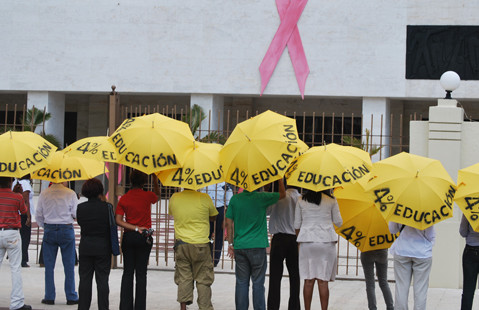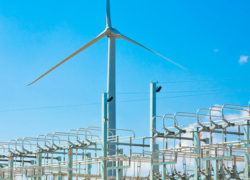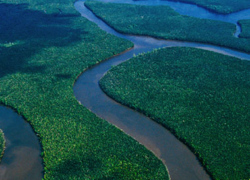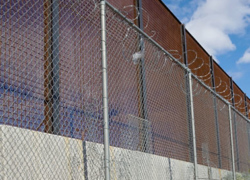An interview with Jed Bailey, managing director of Energy Narrative
Nate Graham (Program Associate, Energy, Climate Change & Extractive Industries): For more than two months, Covid-19 and the measures implemented to slow its spread have had a devastating effect on the global economy, with activity ceasing almost entirely in some sectors. The virtual disappearance of international travel has hit Caribbean economies particularly hard, decimating the tourism sector on which they greatly depend, and which is expected to lag in its recovery as consumers continue to be wary of travel and have less disposable income in their pockets. The current economic adversity in the Caribbean, and that on the horizon, will have numerous implications for the region’s energy sector and raises many questions.
Prior to Covid-19, the Caribbean was a burgeoning market for renewable energy investment with abundant untapped potential, especially in solar power. Additionally, in recent years, catastrophic storms have shined a light on the need for more modern and resilient grids in many islands. How will Covid-19 and recovery spending affect ongoing efforts to invest in these areas? Renewable energy development to date has been driven in part by the regional power sector’s high dependence on imported oil, which has been volatile and often costly, but oil prices have recently reached record lows and may remain depressed for a sustained period. Will islands hit the brakes on renewable energy? And as economic activity languishes due to stay-at-home measures, the region’s utilities are facing an unprecedented power demand crisis. How is Covid-19 affecting them? Finally, how are governments reacting to all these disruptions in the energy sector?
Jed Bailey is the managing director of Energy Narrative, which in addition to its analysis and advisory services, publishes a weekly brief on the latest energy news in the Greater Caribbean. I asked him how he sees the region’s energy sector now and in the post-pandemic world.
Nate Graham: In general, what do you see as the effect of Covid-19 on ongoing efforts to drive renewable energy development and bolster grid resilience in the Caribbean? Is the idea of using fiscal stimulus measures during the Covid-19 recovery to accelerate renewable energy development, grid modernization, and thus economic diversification being discussed, as it is in some other regions?
Jed Bailey: The Covid-19 crisis strikes on the back of five years of rapid growth in renewable energy capacity across the region and threatens to stall the momentum that has been built. Between 2015 and 2019, the Caribbean region increased renewable energy capacity by 50 percent, growing from 2.3 GW to 3.4 GW. Of this total, solar power has grown the fastest, almost tripling from 330 MW in 2015 to 950 MW in 2019. Although most new capacity additions are now renewable energy technologies, renewables are still a relatively small share of the total installed capacity in most countries. Jamaica was an early leader, installing the first privately owned wind power project in 2004, but today renewables still account for just 17 percent of the total electricity generation capacity. Barbados has committed to 100 percent renewable energy by 2030, but currently has just 25 MW of renewable capacity, roughly 9 percent of the island’s total generation park. For most countries, the majority of their power comes from thermal generators burning imported fuel oil and diesel. A few of the larger jurisdictions have access to natural gas for utility scale electricity generation, notably Trinidad & Tobago, Jamaica, the Dominican Republic, and Puerto Rico.
Resiliency is also a major concern for the region. Recent major hurricane strikes in the Bahamas, Puerto Rico, Dominica, Barbuda, and others destroyed power lines and damaged wind turbines and solar power panels. Microgrids are only just now being developed as countries in the region grapple with how to balance investment in resiliency and redundancy with the need to keep electricity tariffs and government spending at sustainable levels.
However, overall, Covid-19 has been a very difficult external shock for the Caribbean region and other priorities are likely to supersede continued efforts in renewable energy and resilience. In addition to the direct human toll and pressure on the region’s health care systems from Covid-19, the collapse in income from tourism and remittances has been deeper and faster than during the global financial crisis of 2008-2009.
Thus, the initial discussions of what comes next that have taken place have focused on reducing economic dependence on tourism, given the expected slow recovery of the sector. Tourism accounts for just over 5 percent of GDP on average in the Caribbean, but many countries are far more reliant on it—in Aruba tourism directly contributes one third of the country’s GDP, in six other Caribbean nations it accounts for a fifth or more of the total, and in a further seven countries it has a share greater than 10 percent. Remittances are also an important source of income for many countries, totaling more than 30 percent of GDP in Haiti, 16 percent in Jamaica, 9 percent in Dominica, and 8 percent in the Dominican Republic. With tourism in freefall and remittances projected to fall 20 percent this year, most countries are focused on simply surviving the near-term shock.
Economic stimulus packages have likewise been focused on near term needs. The IMF, IDB, World Bank, and other multilateral groups have already enacted several support packages for countries in the region aimed at macroeconomic stability, supporting health care systems, and providing cash transfers and other income support to the unemployed. Increasing local production of food and critical manufacturing capabilities are also a priority as global supply chains look vulnerable to Covid-19 related disruptions.
Regarding the possibility of renewable energy stimulus, countries currently have more than enough electricity generation capacity to meet demand given the sudden economic slowdown and the fact that hotels and restaurants remain empty. In addition, most renewable energy and microgrid technologies are imported, and so these projects provide less stimulus to the local economy than investment with greater local content. Overall, for most countries, economic diversification in the energy sector is much lower on the priority list than other sectors, at least for the time being.
Nate Graham: How have past price fluctuations in the price of oil affected political will to pursue renewables and natural gas? Will current oil prices threaten expansion of renewables, or has the Caribbean been burned by oil price spikes too many times?
Jed Bailey: The Caribbean has certainly had several trips on the oil price rollercoaster. During the period of high oil prices in the early 2010s, electricity rates soared, as did inflation, as oil imports are the single greatest use of foreign currency for many islands, accounting for roughly 13 percent of GDP. Some islands softened the economic blow by subsidizing electricity tariffs, while others, such as Jamaica, developed infrastructure to import natural gas and diversify their power generation fuels. The 2013-2014 oil price collapse in turn put proposed natural gas infrastructure projects in Barbados, the Bahamas, Puerto Rico, and the Dominican Republic on hold. Although oil prices soon rose again, rapidly falling costs for renewables and, more recently, battery storage, made these technologies increasingly attractive relative to major investments in natural gas infrastructure. Barbados, for example, is no longer pursuing natural gas imports for utility scale power generation as it focuses on increasing renewable generation. The current return to very low oil prices will further reduce the attractiveness of natural gas for those islands that do not already have the required infrastructure in place, potentially once again stalling the Bahamas’ plans to switch the main generation station on Nassau to natural gas, for instance.
Political support for renewables will remain, but the dip in electricity demand from the economic recession will slow the need for new electricity generation capacity. The ongoing financial drain on governments and utilities will also force most countries to continue to rely on their current electricity generation capacity, as funds will not be available to prematurely retire thermal generators in favor of new renewable capacity.
Nate Graham: Has Covid-19 exposed any particular weaknesses in the Caribbean’s energy sector?
Jed Bailey: The most important weakness is in the financial standing of some of the region’s utilities. The reduction in utility income from falling electricity demand (especially from the commercial and hotel sectors, which constitute the most reliable and lucrative customers for most utilities in the region) will more than offset their reduction in fuel costs. This means that countries that subsidized electricity tariffs in the past, such as and Trinidad and Tobago, have little room to reduce tariffs now to help support the future economic recovery.
The exact situation varies by company. Most of the privately-owned utilities in the region, including BL&P in Barbados, Lucelec in St. Lucia, and JPS in Jamaica, had a relatively strong financial position prior to the crisis. On the other hand, many state-owned utilities, including BPL in the Bahamas and PREPA in Puerto Rico, already had high levels of debt (often from subsidizing electricity tariffs) and have limited ability to raise additional funds without external support.
Nate Graham: Conversely, have there been any bright spots?
Jed Bailey: Although investment in new renewable energy will likely be delayed, the decline in electricity consumption means that renewable energy capacity that is already installed is now providing a larger share of the total energy supply than ever. Because renewable energy sources have nearly zero marginal cost and are generally non-dispatchable (particularly solar and wind, which are most prevalent in the Caribbean), these technologies will continue to be used first, with the lion’s share of the reduction in demand cutting into supply from thermal generators. This reduced call on thermal generators, along with the dramatic fall in liquid fuel prices, will greatly reduce the amount of money spent on fuel imports. For many countries in the region this is one of the largest drains on foreign currency reserves, representing 28 percent of GDP in Turks and Caicos, 23 pecent of GDP in Barbados, and 22 pecent of GDP in Dominica. This should be a welcome respite for Caribbean countries that rely on tourism as a source of foreign currency and will further burnish the region’s already strong trust in and support for renewable energy.
Nate Graham: How have Caribbean governments thus far managed the balance between continuity of electricity services and the health of power companies’ finances, with many consumers out of work and unable to pay their bills? What measures have been taken across the region in terms of subsidized rates, waiving or postponing bill payments, etc., and in which islands are power companies bearing the greatest cost?
Jed Bailey: As in many parts of the world, Caribbean utilities are suspending electricity disconnections for non-payment. In most countries, new electricity subsidies are not being considered, although the fall in the cost of liquid fuels will have much the same effect as electricity prices closely mirror oil prices. In many countries, fuel costs are separated from other utility costs and are passed through directly to the consumer. This can be a substantial share of the total—in Barbados, for example, the March fuel charge represented roughly 60 percent of the total electricity bill for a typical residential customer. When the drop in liquid fuel prices in April is factored in, that country’s electricity customers could see as much as a one-third reduction in the cost per kWh for their May bill. Even so, delinquencies are expected to rise as businesses across the region that depend on tourism see their revenue collapse and workers lose their jobs.
In collaboration with
RELATED RESOURCES
Electrified Islands: The Road to E-Mobility in the Caribbean (Report)
Clean Energy Auctions in Latin America and the Caribbean (Report)
 Video
Video




















